Scientist of the Day - Wilhelm Beer
Wilhelm Beer, a German banker, was born Jan. 4, 1797, in Berlin. Beer was that rare patron who was able to have his name attached to a significant scientific achievement, and not just to a building or instrument built with his money. In Beer’s case, it was a lunar map. Beer was an amateur astronomer, and he built himself an observatory in Tiergarten, equipped with a 3.75 inch refractor, the kind of instrument you could buy today for $500, but still quite suitable for observing solar system objects, especially the Moon.
The smartest thing Beer did was to team up with a slightly older professional astronomer, Johann Mädler, who had his sights set on producing the largest and most accurate map of the Moon ever attempted. With Beer supplying the telescope and room and board, and Mädler contributing the time and observing skills, they managed to pull off the selenographic coup of the century. Mädler spent four years recording the distances of every feature on the Moon from certain cardinal points that were determined with great accuracy. He used micrometers within the telescope to measure these distances. He plotted all his carefully measured features onto a map that was almost a meter across, just over 38 inches in diameter. The map was published in 1834 as Mappa Selenographica, and it was printed by lithography, the first lunar map to be issued using this relatively new printing process.
Because of its size, the map was published in four quadrants, which one could trim and put together, if one liked, or leave on separate sheets, or trim and leave separate, as in the copy in the Linda Hall Library. We show here the second quadrant, with the Ocean of Storms (first image); the four assembled quadrants to make the complete lunar map (third image); and a detail of the corner of the first quadrant, where there is an inset that functions as a title page (fourth image). You can see the complete first quadrant, and several details of the map, at the post we wrote on Johann Mädler in 2018. We also displayed the first quadrant in our exhibition on lunar cartography, The Face of the Moon: Galileo to Apollo (1989).
Beer and Mädler published a descriptive text of the map three years later, Das Mond (1837). Both publications, the map and the handbook, give Beer equal billing with Mädler, and put Beer’s name first, so that this map is nearly always called the Beer & Mädler map. We don’t know whose idea this was, but my guess is that it was Mädler’s, since, as the expert behind the map, he could certainly have insisted on priority in publication if he had wanted. Perhaps he was just genuinely appreciative of all that Beer had done for him and was happy to have Beer’s name listed first.
In 1840, Beer and Mädler collaborated again on a book about the solar system. It was not especially systematic, which I suppose is why they called it Fragmentes sur les corps celestes du system solaire (and yes, published in French). It has chapters about the Moon, Saturn, and Jupiter, but it is the chapter on Mars that is especially interesting, because it contains the first good illustrations of the elusive red planet. We see above the fourth plate in the book, in which the drawings (made 1830-32) are accurate enough that we can easily distinguish the two most notable features of Mars: Syrtis Major (looking like India), and Lacus Solis (looking like a large eye).
It is possible that neither Beer nor Mädler had anything to do with another notable feature of the Fragmente – the clever way the lithograph plates are mounted – but we want to discuss it anyway. We see first a plate that shows how Mars appeared in the year 1837 (sixth image, just above). The plate in this view is folded up into the book.
But the plate is actually attached to another sheet, called a stub, which allows the plate to be folded out quite a distance from the spine, as we see in the image just above.
And the reason why this is notable is that, if you want to consult the text about how Mars appeared in 1837, you can fold the plate out and have it visible while you read the text, as we see in the last image.
This mounting of plates on wide stubs was not unique to the Fragmente – many 18th- and 19th-century books have this feature. But it is hard to find any book published in the 20th or 21st centuries that is quite so considerate of the needs of the reader.
Dr. William B. Ashworth, Jr., Consultant for the History of Science, Linda Hall Library and Associate Professor emeritus, Department of History, University of Missouri-Kansas City. Comments or corrections are welcome; please direct to ashworthw@umkc.edu.

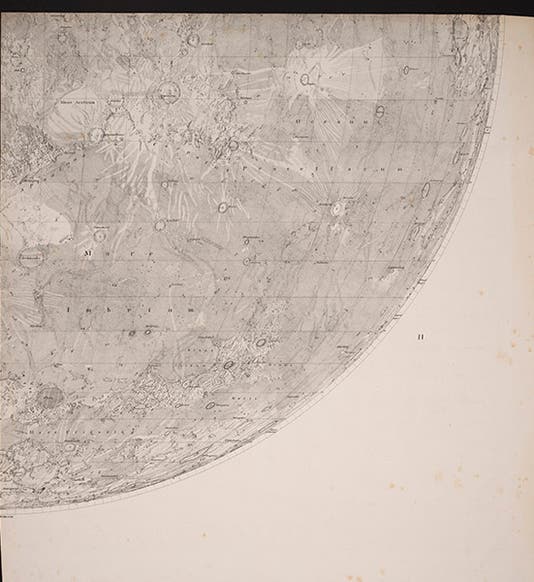

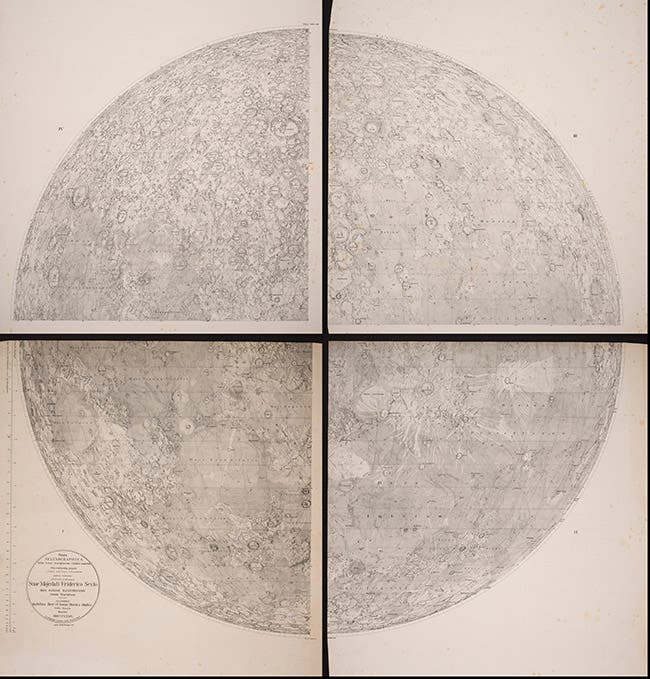
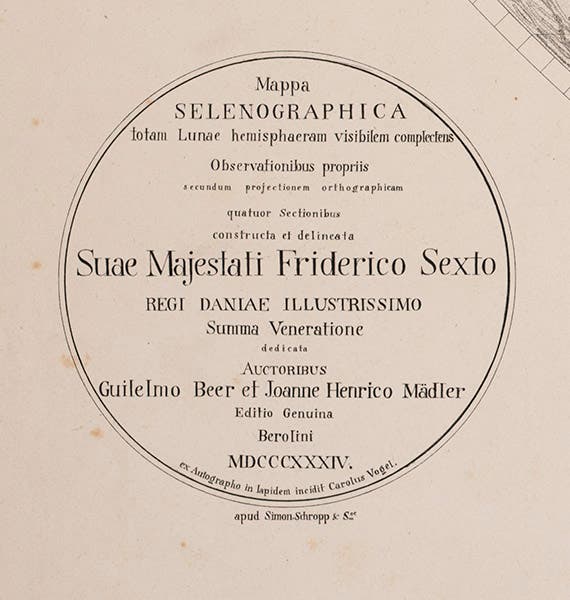
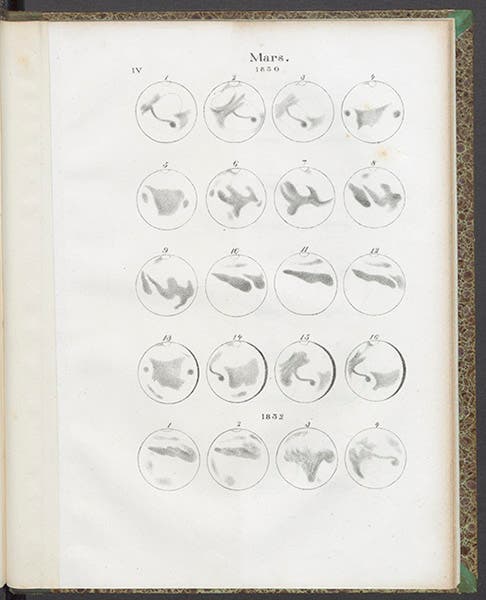


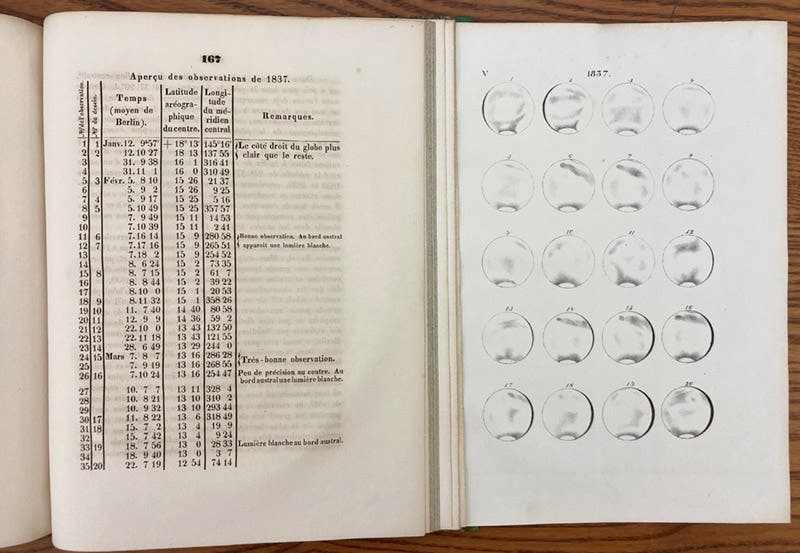
![“Aurora Borealis,” hand-colored wood engraving by Josiah Wood Whymper, [Natural Phenomena], plate 2, 1846 (Linda Hall Library)](https://assets-us-01.kc-usercontent.com:443/9dd25524-761a-000d-d79f-86a5086d4774/0245ffcb-b70c-477c-8792-0a73ebd54eb2/Whymper%2011.jpg?w=210&h=210&auto=format&fit=crop)



